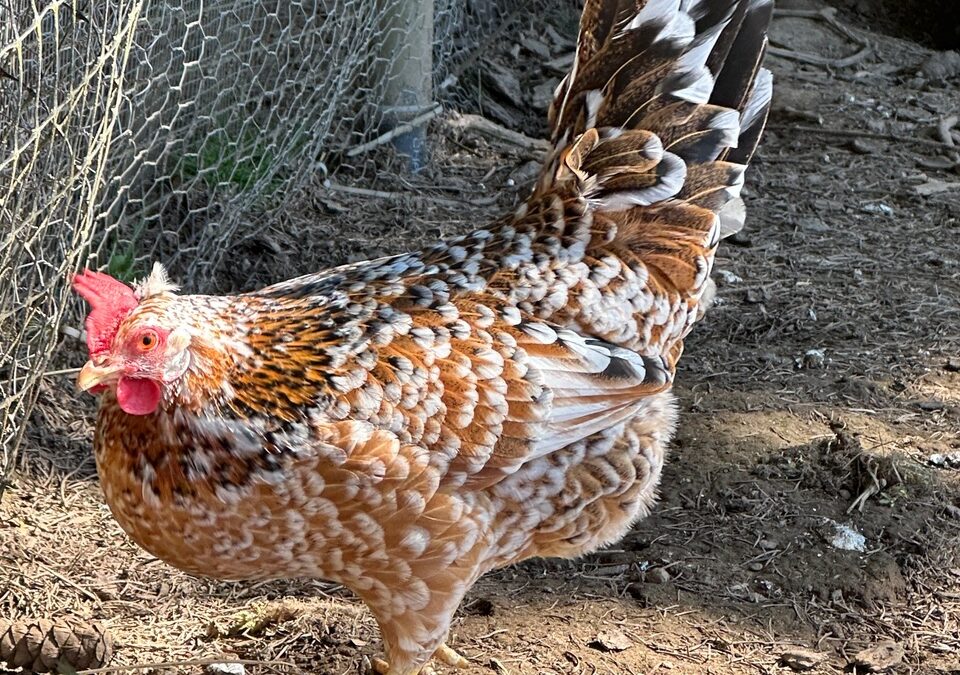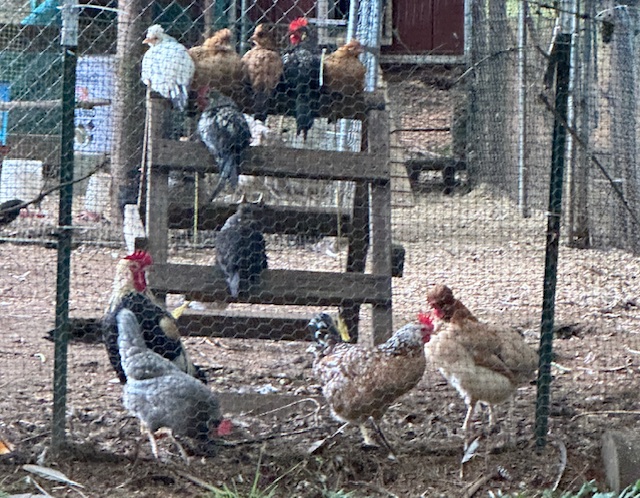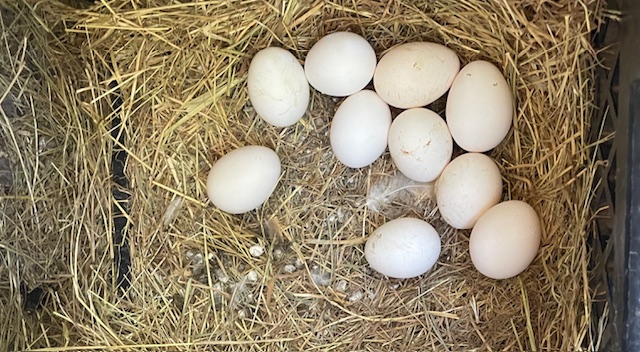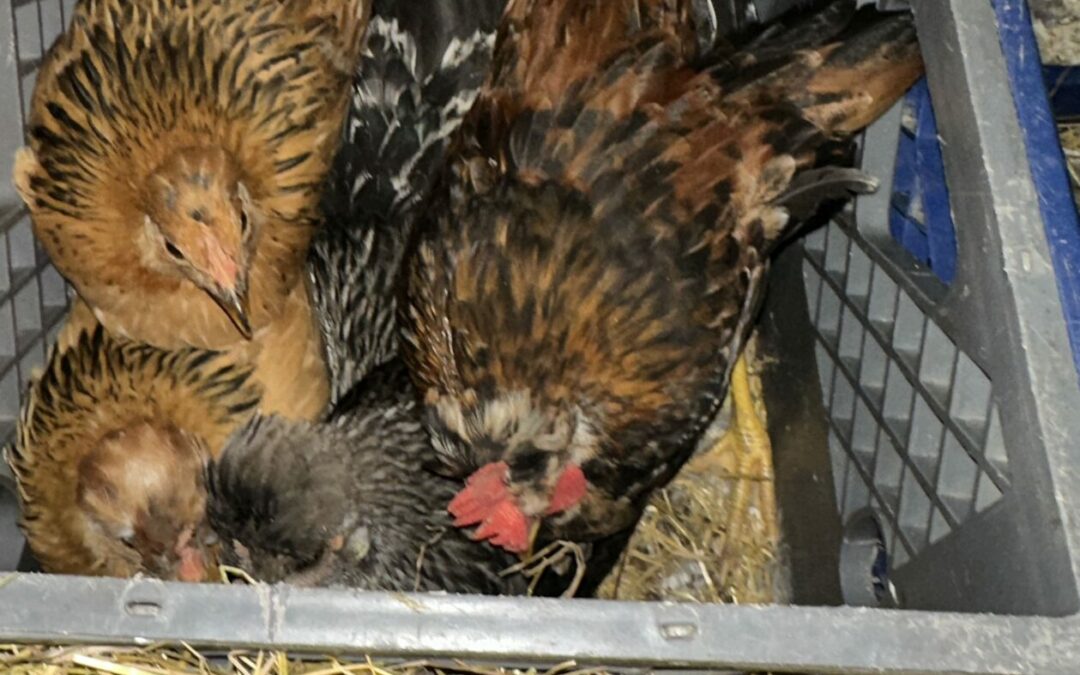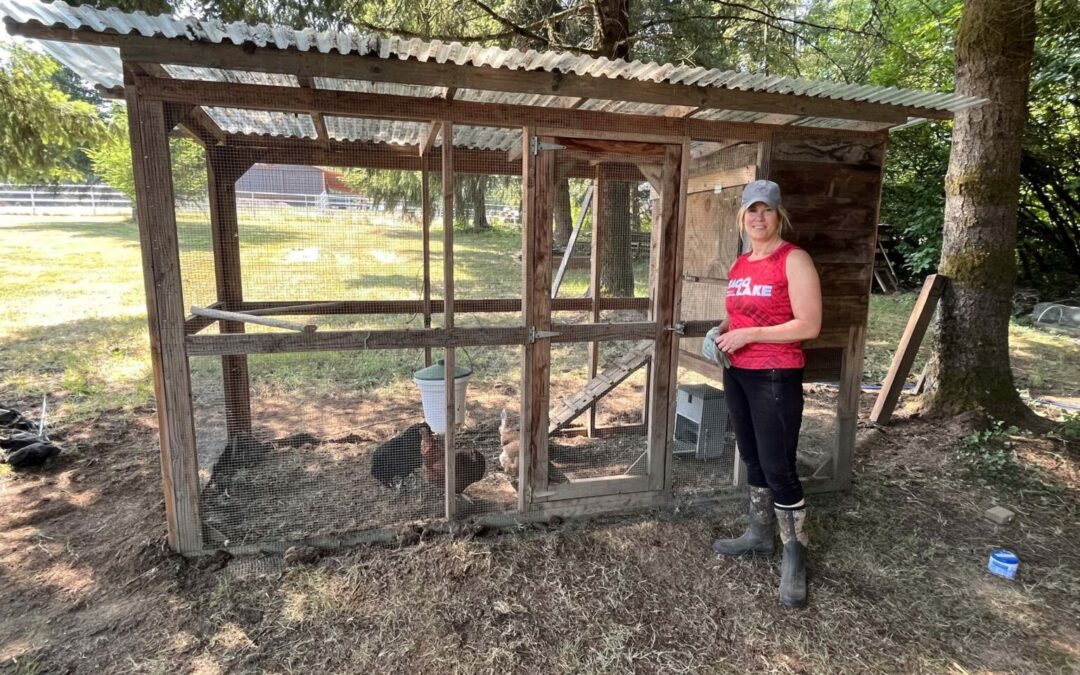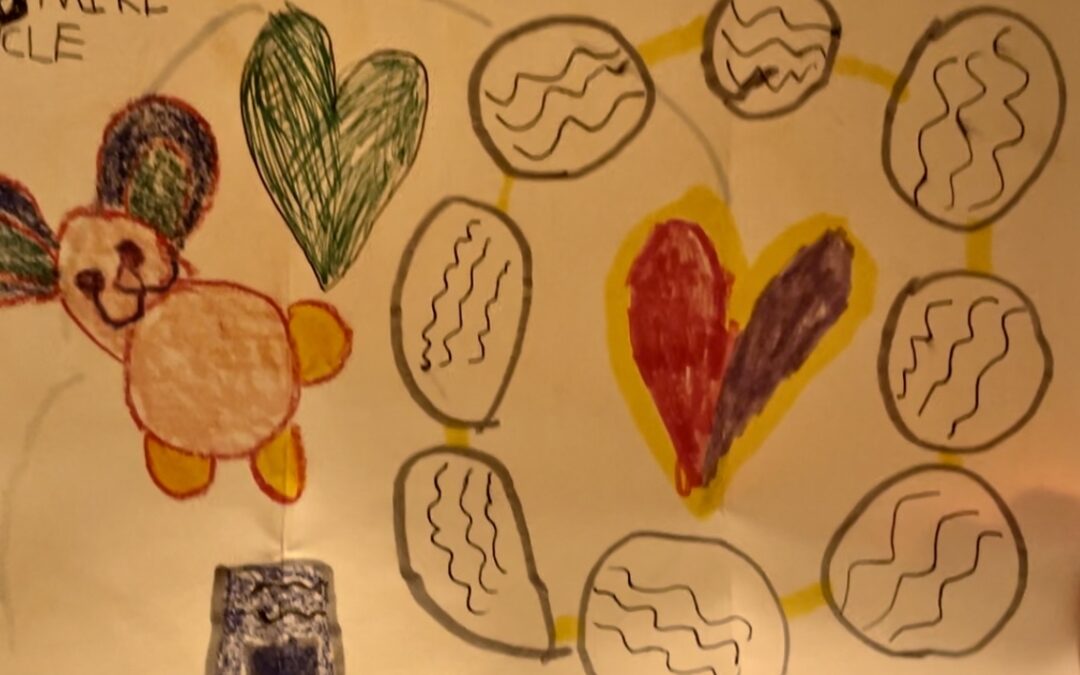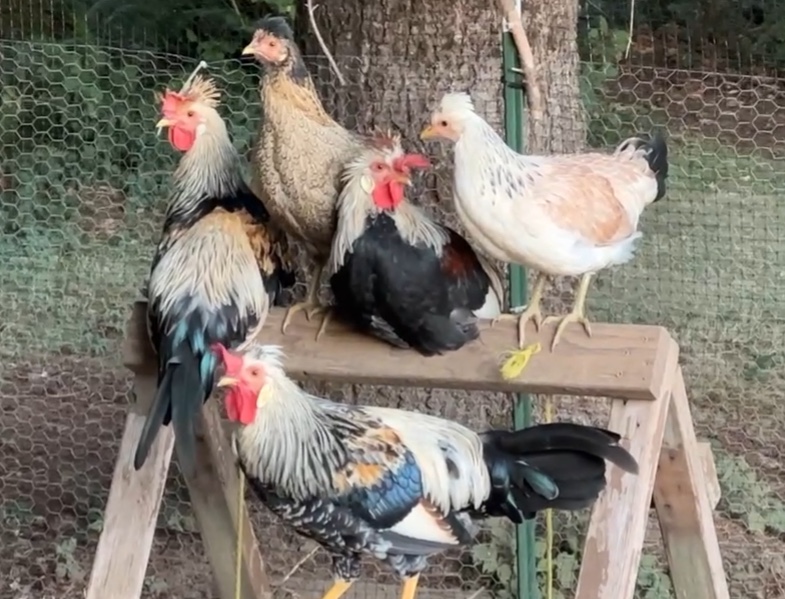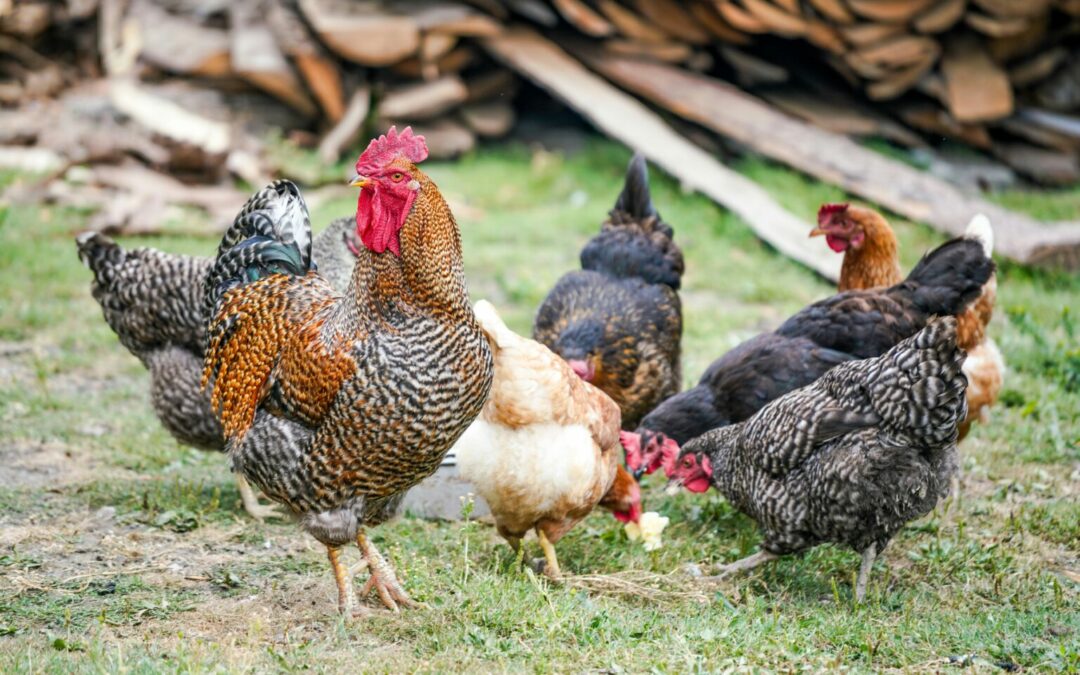
Let’s Celebrate
For some reason, when I introduce pullets into the greater flock, my older chickens seem to regress. They start chasing the pullets away from the food, squawking at each other, and in general not being very nice to the newcomers. I get they need to re-establish their pecking order, but do they really need re-learn how to be a kind chicken? My biggest frustration is that this means the new chickens are forced to sleep in the nesting boxes. When the younger hens try to jump onto the roosting bar, the older hens start pecking at them. Last summer, we ended up with four hens roosting on the bars and the remaining nine pullets crammed into the nesting boxes. While dogs don’t like to sleep in their pee or poop, apparently chickens don’t care. So we end up with messy nesting boxes, and “poopy” eggs.
This spring I was determined to address this issue once and for all. And you know what? I solved it! I put a board in front of the nesting boxes right before the chickens went to bed, forcing them to figure out how to coexist on the roosting bar. It felt like I took another step toward enhancing my chicken mama skills.
I shared this excitement with my husband, but he really didn’t seem too impressed. I know, the fix didn’t take a lot of effort, but it did take me some time to figure out. I have been struggling with this issue for three years!
I am on a journey to become a chicken mama, and that means I’ll have small wins and a few losses along the way. Three years ago, some of you may recall, we lost all but one hen and one rooster during the Great Chicken Massacre. It was a painful experience, but we went through it together. It seems only right that if we are going to suffer together, we should also celebrate together! So I coached my husband that I wanted him to celebrate with me, regardless of the size of the win.
Recently, I have become aware that some of my leadership teams aren’t celebrating their successes together either. At the beginning of each session as part of the check-in, I ask each team member to share one personal and one professional highlight since we last met. Sometimes a team member will quickly read off their wins with their head down, then move on to the rest of the check-in. When this happens, I wonder why. Is the team member uncomfortable sharing the wins? Is there something happening in the team that is preventing them from celebrating together? Or are they just focused on the task at hand?
Being on a leadership team can be very challenging, and team members often feel the weight of leading the company. As I tell my teams, you get to take credit for all the great things happening in the business, but you also have to take responsibility for all the problems in the business: lack of cash to cover payroll, not enough sales to hit the quarterly targets, sticky personnel issues. In any company, though, there are also great things happening. And if we don’t stop and celebrate the progress being made, as well as the great things happening in our personal lives, we are missing an opportunity to grow closer as a team.
One thing I often tell my clients is, “A great team working together can solve anything.” However, being a great team means being a healthy team. This means being willing to be vulnerable with each other, calling each other out, challenging each other. In Patrick Lencioni’s book “The Five Dysfunctions of a Team,” he says a team that focuses on collective results “enjoys success and suffers failure acutely.” I don’t know about you, but having someone to enjoy success and suffer failure with seems a lot better to me than having to experience all of that alone.
So, the next time one of your team members shares a win in their work or in their personal life, I’m going to encourage you to stop and celebrate with them. If they feel uncomfortable celebrating, ask them why. Ask them if they are getting the support they need from the team. Remain committed to ensuring that your leadership team is a healthy team, so it can serve as a model for the rest of the company to emulate. If you see your team struggling to work together toward a common vision, please reach out to me. My passion is helping leadership teams become healthy and cohesive, not a bunch of hens pecking at each other.

